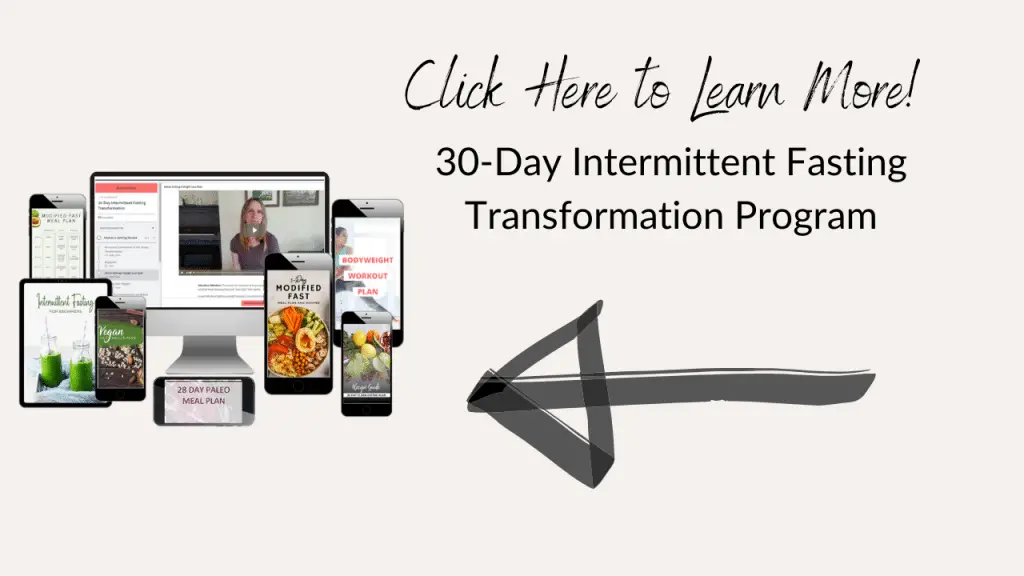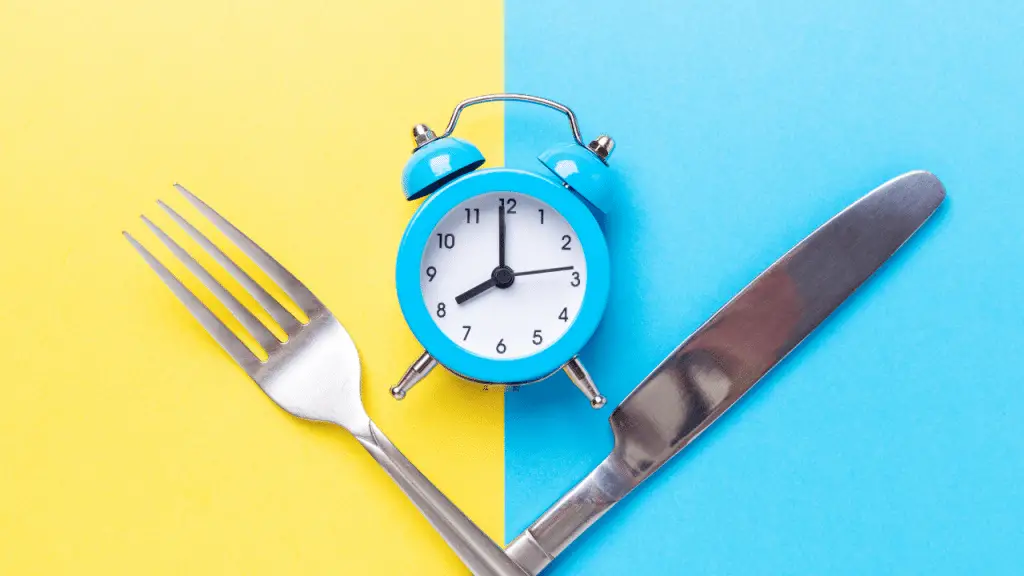Intermittent fasting has become one of my favorite cures against food cravings. As you become metabolically flexible, you will discover that your food cravings diminish, so weight loss tends to happen naturally when intermittent fasting is done right. Moreover, once at your goal weight, you will no longer be fasting the same way, but you will still find it helpful to know how to deal with food cravings with fasting. Intermittent fasting is essential to keep the weight off and enjoy optimal health. In this post, we will discuss what causes food cravings, and I will give you practical steps to use fasting to deal with your food cravings.
What Causes Food Cravings
If you struggle with food cravings, you are not alone. More than 90 percent of the population experiences food casings at one time or another.
Food cravings are complex and can have many causes. However, most of us will find that food cravings relate to one or more of the following:
- Insulin resistance
- Hunger hormones imbalances
- Pleasure hormones and addictions
- DysregulationAppetite center of the bain
- Poor gut health
If you want to dig deeper into the causes of food cravings, read Brain regulation of appetite and satiety. It’s a fascinating topic.

How Fasting to Deal With Food Cavings Works
Becoming metabolically flexible is key to dealing with food cravings. Let’s discuss why and how it works and how you can use fasting to become metabolically flexible.
Becoming Metabolically Flexible
When metabolically flexible, your body can easily switch from glucose to ketones for energy. Most of us function on glucose for energy continually. Over time, it causes us to become glucose-dependent and insulin-resistant. Fortunately, we can train our bodies to switch from glucose to ketones using fasting. This will noticeably reduce food cravings as ketosis reduces your appetite overall. Moreover, it improves your gut health and your insulin sensitivity.
The Effect of Ketosis on Your Appetite
When you use intermittent fasting to become metabolically flexible, your body regularly goes in and out of ketosis. If you have ever been on a keto diet, you know that you feel less hungry, and your appetite decreases when you are in ketosis. It’s not just in your head. Clinical studies demonstrate that a calorie deficit will affect hunger less when subjects are in ketosis. Similarly, you will notice that you can use fasting to keep your appetite under control by ensuring you enter an optimal ketosis level regularly.
Fasting for Improved Gut Health and Insulin Sensitivity
Fasting improves your gut health and your insulin sensitivity, which will both affect food cravings. I want to start with gut health because I recently talked with a coaching client who noticed intermittent fasting reduced bloating and improved gut health more than all her expensive probiotics. After my first modified fast, I noticed the same thing (read I Went on the Fasting Mimicking Diet and This Is What Happened to learn about my experience).

Regarding insulin sensitivity, you don’t need to look very far to learn about the effect of fasting on your insulin sensitivity. It boils down to giving your body a break from producing insulin. Did you know that every time you eat, your body produces insulin? Giving your body a break from food gives it a break from producing insulin, making it easier to sense insulin when it is there. That makes sense, right? And many food cravings stem from blood sugar imbalances. That makes sense, too.
Read more about the benefits of fasting in my post 10 Fasting Benefits That Will Blow Your Mind.
How to Deal With Food Cavings Using Fasting
Now, you have a very simplified understanding of what causes food cravings and how using fasting can address the root causes of fasting. Let me show you how to implement it to learn how to deal with food cravings, as it addresses many common causes of food cravings. The approach will vary a little bit depending on whether you are trying to lose weight or not.
When You Are Losing Weight
When you lose weight, you are fasting a few times a week, and maybe you have food cravings during your fasting window. Read 7 Most Effective Ways to Curb Hunger Cravings When Fasting in this case. You may also struggle with wanting to eat when you are not hungry during your eating window. The key here is to ensure you become metabolically flexible with intermittent fasting. This is how you will notice the most improvement (with ketosis’s help, as we discussed).
Becoming Metabolically Flexible
I have three tips I comment you follow to ensure you become metabolically flexible with intermittent fasting:
- Start by becoming fat-adapted. Go on a 7-10 keto cycle or a 5-day modified fast BEFORE experimenting with intermittent fasting.
- Experiment with a fasting window of 20-hour or more. You need to fast long enough to achieve ketosis on your fasting days.
- Limit the stress you impose on your body. Don’t worry about calorie restriction or carb restriction. Don’t fast more than five days a week.
With experience, you will know how it feels to be in ketosis. Before that, you may find it useful to measure your ketone level using a ketone monitor. I recommend the Keto Mojo. Enjoy a 15 percent discount with my affiliate link. In my post What Is Metabolic Flexibility and How It Can Help You Lose Weight, I learned about metabolic flexibility.

When You Are Not Losing Weight
In maintenance mode, food cravings signify that you need a fasting reset. You must learn to pay attention to your body’s cues. Not sleeping well and less energy are other signs that it’s time for a quick reset. I enjoy doing a 24-hour fast once in a while to support my overall health. Read Why You Should Try a 24-Hour Fast While and After Losing Weight to learn more.
However, you may notice that you don’t even need to fast that long to deal with food cravings.

How to Deal With Food Cravings Using One Fast
After losing weight by becoming metabolically flexible, keeping food cravings at bay is much easier. By now, you are in tune with your body and know when to break your fast to maintain your overall health. You may find that most days, you consume calories before noon, or you may go through times when you break your fast after lunch. At this point, it’s about discovering the approach that makes you feel your best. That changes over time, just like the types of foods you consume. For example, I notice my body wants freshly pressed fruit and vegetable juices during some seasons. At other times, I gravitate towards a low-carb, protein diet. Free yourself from “rules” and pay attention to your body!
Whenever you notice that your cravings are coming back, try one fast. It could be a 24-hour fast or an even shorter fast. I only need one 20-hour fast to reset and deal with food cravings. If I ever notice I want to eat when I am not hungry and crave sweets again, one 20-hour fast works without fail! You may have to experiment to find the fast length best for you, but it will likely be in that neighborhood.
You may enjoy reading What Food Cravings Mean – Check Out This Simple Chart.
Receive more guidance to reach your health goals with my 30-Day Intermittent Fasting Transformation.

How to Deal With Food Cravings Using Fasting Video
In Summary
Learning how to deal with food cravings takes some time and experimenting. Fortunately, intermittent fasting makes it much easier by getting at the root cause of your food cravings. As you advance in your health and wellness journey, always remember to give yourself grace. It’s ok to give in to your cravings sometimes. Find the balance between enjoying life and achieving your health and wellness goals. Joy is an essential part of feeling alive! Enjoy the journey!




